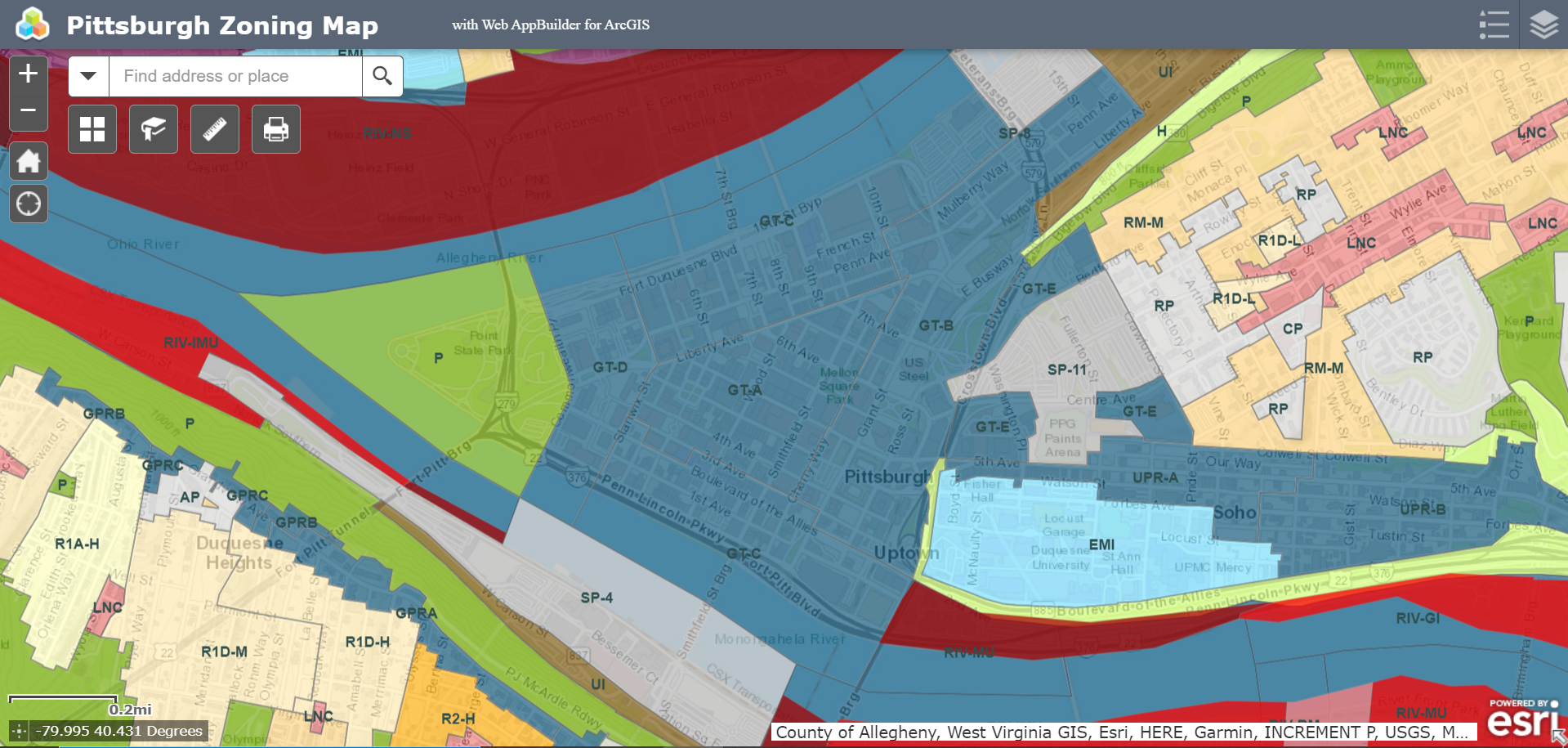Pittsburgh Zoning Districts - GT-A Density
By Kathleen Oldrey
Density and Height Standards
Zoning districts regulate the height of primary uses and the density of a site. Minimum lot size, height, and setbacks (the distance between the property line and the building, structure, or use) are used to control density and vary by zoning district. If there is a site-specific hardship that prevents a project from meeting these standards, a dimensional variance may be sought from the Zoning Board of Adjustment.
In the GT zoning district, slightly different dimensional standards apply than in most other Pittsburgh districts: rather than setbacks, the GT-A subdistrict regulates minimum lot area per dwelling unit, floor area ratio (FAR), and urban open space.
Note: Accessory uses may have more restrictive height standards and more permissive setback regulations. We will discuss this more in a later post.
Note: The zoning code standards listed in this post were those available in the online zoning code as of June 2022. Whenever there is a code amendment, it often takes months for the online version to be updated. Zoning staff have access to the most recent code amendments, which can also be found on the city’s online legislation center.
Standards
Minimum Lot Area Per Dwelling Unit: no more than 1 dwelling unit or suite per 110 square feet
Maximum Floor Area Ratio (FAR): 13
Minimum Urban Open Space: at least 10% of the lot area on lots of 20,000 square feet or more
For Additional Information
See our overview of the GT for more about this district and our Introduction to Pittsburgh’s Zoning Districts for the complete list of base zoning districts in the city.
Need More Help?
Visit our Pittsburgh Zoning Consulting page to request one or more of the following services:
a 30- or 60-minute Zoning On-Call virtual meeting to ask your specific questions about Pittsburgh’s zoning ordinance
a Use Restrictions & Zoning Report to check for any potential use and zoning issues on a property you want to buy
a Zoning Plan Check to preemptively resolve or accommodate zoning issues that may otherwise cause unexpected delays or cost overruns during the permitting process

